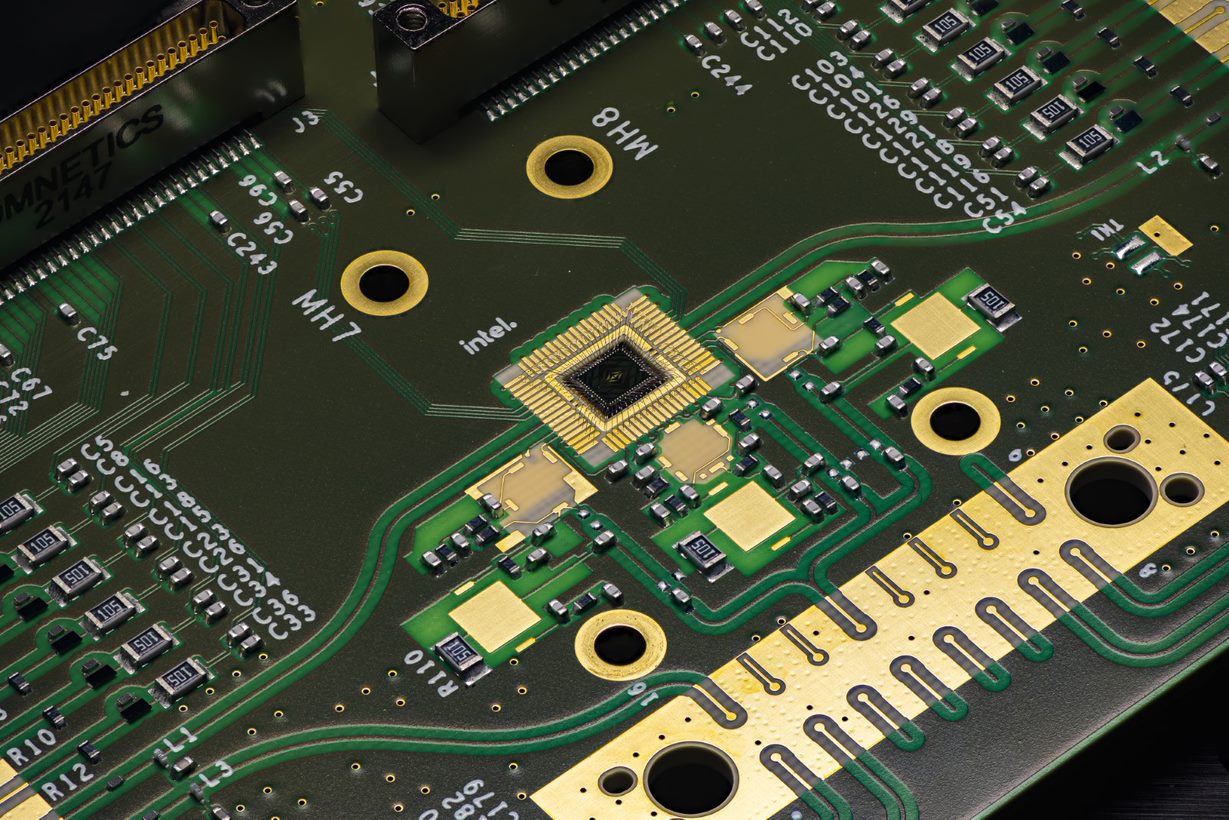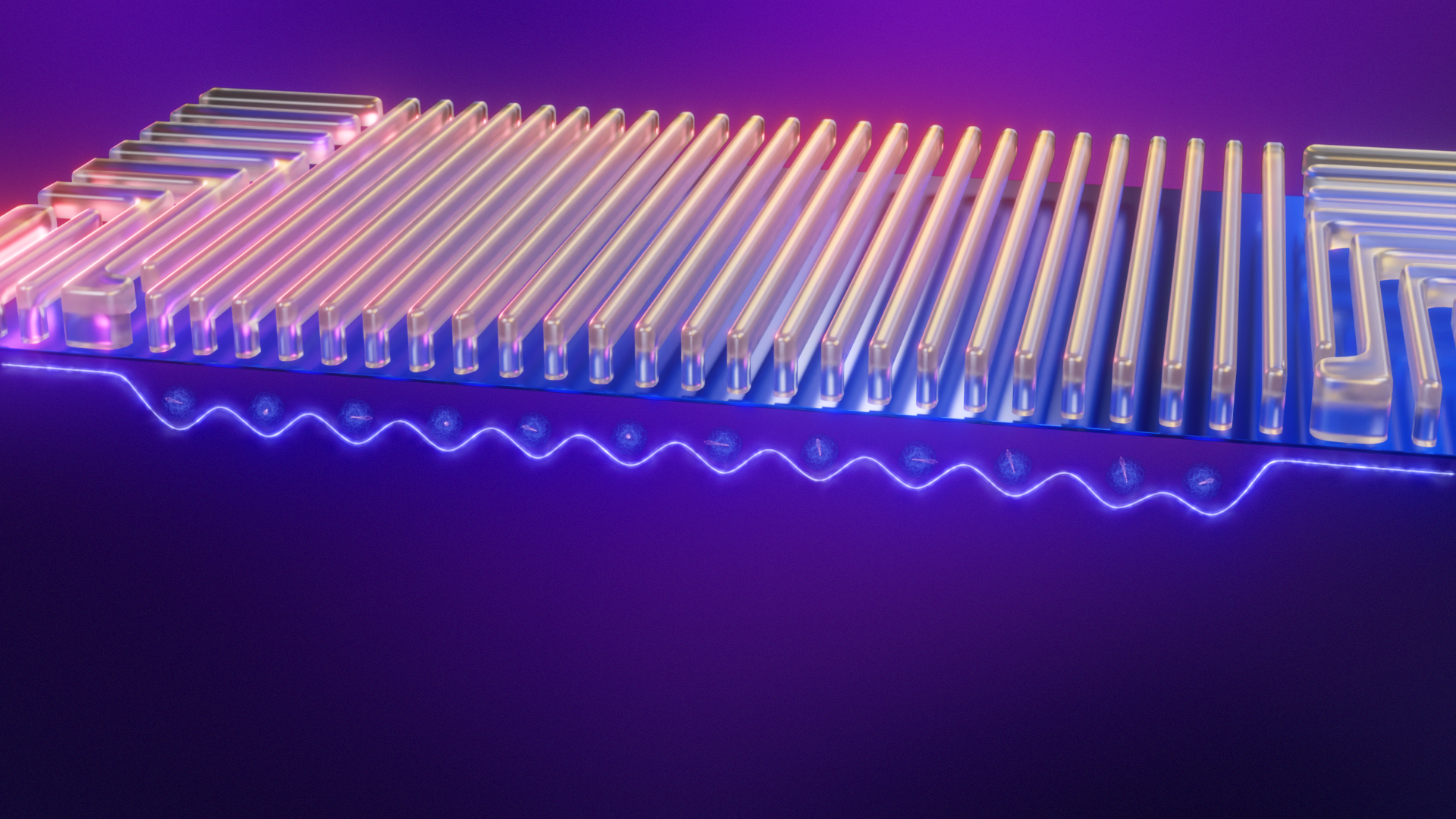Intel Announce 'Tunnel Falls' Quantum Research Chip

Intel announced the next step on its road to quantum with the release of its latest quantum chip, a 12-qubit, silicon-based chip the company is calling "Tunnel Falls". No, no, it's okay, you can keep those greenbacks in your wallet: Intel isn't in the commercialization phase yet. Instead, Tunnel Falls is meant to be a research test chip: it's still a stepping stone towards the actual Quantum Processing Units of the future. Hopefully, those will be more like Intel's own Tunnel Falls than Iran's Amazon-based "quantum computing" technology.
“Tunnel Falls is Intel’s most advanced silicon spin qubit chip to date and draws upon the company’s decades of transistor design and manufacturing expertise. The release of the new chip is the next step in Intel’s long-term strategy to build a full-stack commercial quantum computing system. While there are still fundamental questions and challenges that must be solved along the path to a fault-tolerant quantum computer, the academic community can now explore this technology and accelerate research development.” says Jim Clarke, Intel's director of Quantum Hardware.
While it may be underwhelming to know that Tunnel Falls is just a research test chip, it's also an often overlooked necessity for any new technology. Before any work can be done within the quantum computers of the future, the algorithms, the learning and the how-to have to be started today. One issue with that is the difficulty in producing quantum computing hardware; there's a reason such a small number of big companies - from Intel to Microsoft, IBM, IonQ, and Google - are actively developing quantum computing hardware.

Yet this is exactly where Intel's strategy of using silicon-spin qubits pays off handsomely: it's a quantum computing technology that can be built on the years of Intel's chip manufacturing expertise, applying its knowledge of what levers to move in order to improve yield rates. In fact, Intel says Tunnel Falls fabrication achieved a 95% yield rate with voltage uniformity similar to chips manufactured under the more usual CMOS process. According to the company, a single 300mm wafer provides 24,000 quantum dot test chips with a 95% yield.
"Each qubit device is essentially a single electron transistor, which allows Intel to fabricate it using a similar flow to that used in a standard complementary metal oxide semiconductor (CMOS) logic processing line."
With that strategy comes some expected scaling benefits: Intel has one of the biggest semiconductor factory footprints in the world. With adequate tooling and investment, the company may have an ace up its sleeve to quickly ramp QPU manufacturing: first, for education, research, and development purposes; and finally, for full-scale industrial production.

Intel's choice of qubits meshes extremely well with leading-edge transistor fabrication - one of Tunnel Fall's qubits is roughly the size of a transistor. That alone makes it up to 1 million times smaller than other qubit designs; and the fact that silicon spin qubits - where information (0/1) is encoded according to the spin properties (up/down) of a single electron - turn out to be one of the smallest possible variations of qubits will certainly also aid the company in cramming the many thousands - or millions - of them as required to unlock quantum's potential.
Get Tom's Hardware's best news and in-depth reviews, straight to your inbox.
Intel's Tunnel Falls is meant to add fuel to current research efforts, with the company partnering with the Laboratory for Physical Sciences (LPS) at the University of Maryland, College Park’s Qubit Collaboratory (LQC), a national-level Quantum Information Sciences (QIS) Research Center. Part of this collaboration will see Intel take part in the Qubits for Computing Foundry (QCF) program - associated with the U.S. Army Research Office -to provide Intel’s new quantum chip to research laboratories.
Intel is adamant in saying it believes silicon spin qubits to be superior to other technologies. But of course, this analysis has the full weight of Intel itself: what company wouldn't try to extract as much value from the tech and expertise it already has?

Francisco Pires is a freelance news writer for Tom's Hardware with a soft side for quantum computing.
-
Thanks for the article. Nice read.Reply
I presume Intel used the D1 fabrication facility for this ? They can further improve the performance of Tunnel Falls and integrate it into its full quantum stack with the Intel Quantum SDK.
Still a lot of catch up to do, since Intel's biggest rivals, IBM, already offers multiple 127-qubit quantum computers for research and commercial use, with a 433-qubit machine up and running. 433, jeeze ? !
And the next logical step for Intel would be to create a 2D spin qubit device with the qubits arranged in a grid more like.
IMO, with Intel's expertise in material science and relationships with equipment vendors, allows them to leverage purified Silicon-28 isotope on their planar Si/SiGe heterostructure in the device as opposed to natural silicon which has a mixture of other isotopes including Silicon-29 and Silicon-30.
This won't make a HUGE impact though, but the advantage of Silicon-28, unlike the other isotopes, is that it has zero nuclear spins. For quantum, this CAN make a big difference, because it enables a significant increase in coherence time which will decrease the error rates and improve the accuracy of the calculation.
That also suggests Intel is not yet ready to freeze a single prototype design for exploration by a wider software developer community. As with most qubit modalities, semiconductor-based spin qubits can be implemented in many ways.
As we all know, the barebones tech is being able to locate single electrons in isolated wells and to be able to control their spins so as to encode information in a quantum state (via recent paper, Quantum Dots/Spin Qubits).
But it turns out there are 3 more approaches to making silicon spin qubits, including the Loss-DiVencenzo configuration, the Single-Triplet (S-T0) configuration, and Exchange-only.
https://i.imgur.com/7VMSIFm.png
https://i.imgur.com/OqObSME.png -
ezst036 That means they can integrate a QPU into a future Ultra Core ™ ® © in a few generations.Reply
X86 forever! -
Maybe one day we can use "QPU" on our desktop to play high end Games on 32 100K resolution. :DReply
-
Choo, choo ?Reply
BTW, after going through some of the published papers, and findings, it appears that using the chip, however, still requires hooking individual chips up to a PCB and getting it down to near absolute zero degrees in a dilution refrigeration system.
Intel had to develop a cryogenic probing tool to test the chips at temps approaching 0K kelvin, but similar to CMOS logic process it showed voltage uniformity.
This can also place a bottleneck on testing. Though, Intel claims 95% yield rate across the wafer and voltage uniformity, which is pretty decent IMO, and each wafer provides more than 24,000 quantum dot devices. -
MiniITXEconomy I read once that quantum computing requires insane amounts of super-cooling, and that realistically, you'll never see desktop quantum supercomputer, but... a man can dream.Reply -
YES, Heat is the enemy no 1.Reply
Heat creates error in the qubits that make a quantum computer tick, scuttling the operations the computer is carrying out. So quantum computers need to be kept very cold, just a tad above absolute zero.
So to keep systems in a quantum state, designers have to minimize the risk of anything disrupting the fragile position. The slightest temperature increase can mean that atoms and molecules move around too much, potentially causing a quantum bit (qubit)'s voltage to spike, and flip from one quantum state to another.
Just few months back, MIT researchers developed a NEW wireless communication system that enables a quantum computer to send and receive data to and from electronics outside the refrigerator using high-speed terahertz waves. Interesting concept, but hard to implement that easily.
https://news.mit.edu/2023/new-way-quantum-computing-systems-keep-their-cool-0221 -
By the way, according to Chris Monroe, Chief Scientist at IonQ, Intel should take note, 'cause competing technologies including trapped-ion qubits from the likes of IonQ, have also been getting more attention.Reply
Check out the latest latest interview here, dated June 15, 2023. He says, this technology can seem as illusory as a "Schrodinger's cat". This slipped under my radar.
https://www.datacenterdynamics.com/en/podcasts/zero-downtime/episode-34-when-will-quantum-computers-reach-the-data-center-with-chris-monroe-ionq/ -
jkflipflop98 I think if you could peek behind the curtain for a day, your mind would be blown.Reply